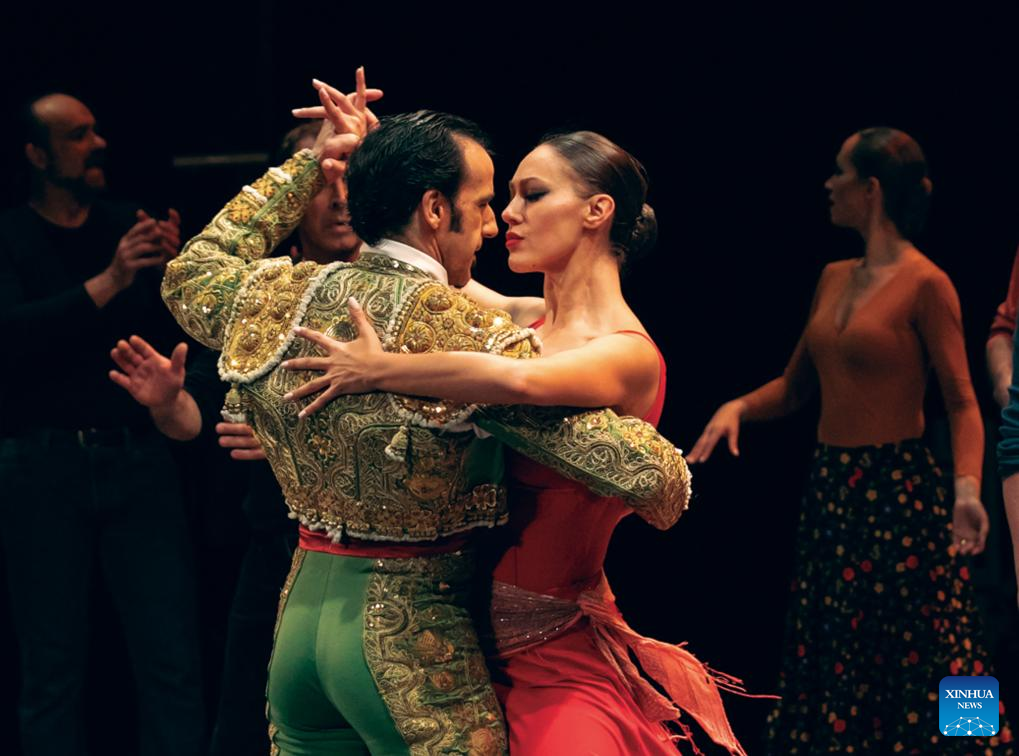
This file photo taken on Dec. 16, 2020 shows dancers of the Antonio Gades Company performing in Madrid, Spain. (Renato Mangolin/Antonio Gades Company/Handout via Xinhua)
SHANGHAI, May 22 (Xinhua) -- A Spanish Flamenco adaptation of "Carmen," an 1845 French novella by Prosper Merrimee, was staged at the AIA Grand Theatre in Shanghai on Tuesday night.
The one-time performance was produced by the Antonio Gades Company, a renowned dance group that has been a pillar of Flamenco in Spain since its establishment. The show was well-received by its audience, who showed great interest and were entertained by the masterful dancing, singing and guitar music.
Flamenco, which has been recognized by UNESCO as a form of Intangible Cultural Heritage, unites dance, song, guitar music and costume to create a distinct art form.
Boasting a profound history, Flamenco has also benefited from the fruits of cultural exchange between the East and the West, according to Stella Arauzo, artistic director of the Antonio Gades Company and chief director of the Chinese staging of "Carmen."
She said that the Manila shawls worn by the dancers are a vivid example of this cultural exchange. These were originally Chinese shawls, and they evolved alongside the rise of Flamenco, being shipped from Guangdong Province in southern China to Manila in the Philippines hundreds of years ago, and then to southern Spain via the Maritime Silk Road.
Over the years, distinct tassels were added, and the shawls became essential props for Flamenco. These shawls remain popular attire in Spain and many Latin American countries.
The Manila shawl is proof that artistic development is inseparable from exchanges between countries and regions, Arauzo said, adding that the dance group hopes this type of exchange will continue to expand.
A presentation on Flamenco was also held recently at the Miguel de Cervantes Library in Shanghai, a center dedicated to fostering cultural exchange between Spain and China. The event provided a detailed introduction to the art form and attracted many attendees.
Famed Flamenco singer Alfredo Tejada incorporated Chinese elements into his performance at the event, improvising lyrics about China and several countries in the Americas to showcase the diversity and inclusivity that have been key to the evolution of Flamenco.
It was Tejada's second visit to Shanghai in the last decade. Each time he has performed there, his powerful, magnetic voice has elevated the shows to their climax.
Enthralled by his performance, the audience learned Spanish words for their cheers and erupted into enthusiastic applause, showing their appreciation for the group.
And this is not the first time that Flamenco has won supporters in Shanghai. During the 2010 Shanghai World Expo, the art form was showcased in the city and won many new fans among the residents of Shanghai, Beijing, Suzhou and Hangzhou. And these fans are not only eager to attend performances -- they have also started to learn how to sing and dance in the Flamenco style. ■



